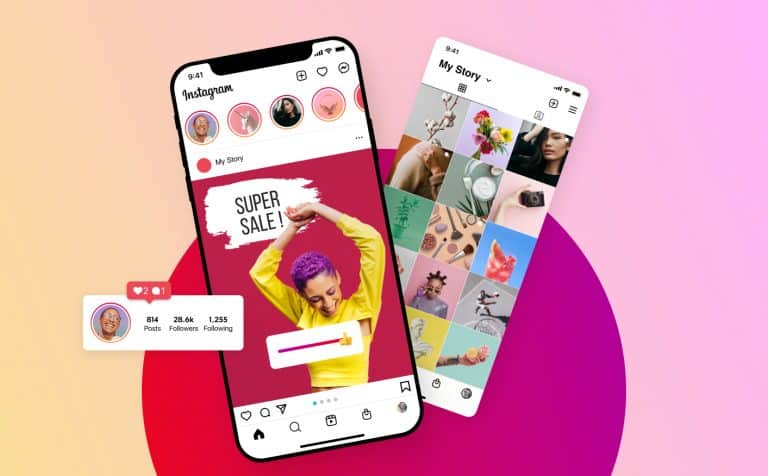
6 effective social media tips for fundraising campaigns
Social media marketing is not just a tool for businesses, but an effective tool for NGOs and non-profits as well, and definitely one that you should consider using in your next fundraising campaign. In this article, we’ll outline how you can use social media to effectively boost your fundraising campaign.
As attention spans among online users become shorter and shorter, it’s becoming more important to tell your story effectively and concisely. Improve donor engagement by getting straight to the point in your marketing content while still expressing your core intent. With its wide-reach and instant publishing, social media has unique qualities that make it an ideal platform for nonprofit marketing.
Below we’ve noted some social media trends below that can help maximize fundraising campaign success and leverage your nonprofit marketing strategy. Navigating social media can be a challenge, but these trends can help boost your donation revenue during your campaign. Let’s take a closer look!
1. Peer-to-peer fundraising
Peer-to-peer fundraising is a powerful social giving tool that allows you to tap into new supporter networks that you might not have otherwise reached. During a peer-to-peer fundraising campaign, nonprofits will empower their supporters to fundraise on their behalf.
Here’s how peer-to-peer fundraising works:
- The nonprofit determines its fundraising goal and sets up its main campaign page. This is where you can host essential details on your mission and fundraiser, include photos of your team, and host your online donation form.
- The nonprofit recruits volunteer fundraisers to set up their own campaign pages.
- The nonprofit trains the volunteer fundraisers and provides resources (such as fundraising appeal templates) to use while promoting their pages.
- The volunteer fundraisers share their campaign pages on a variety of channels (including social media).
- The nonprofit monitors the campaign’s progress and offers ongoing support to the volunteer fundraisers.
Peer-to-peer fundraising campaigns are frequently trending on social media and can help new donors place the familiar face of your fundraising volunteer to an otherwise unfamiliar cause. When your supporters promote your cause to their friends and family and explain their connection to it, you’ll be more likely to acquire new donors through the process. Your participants’ stories are even more effective because they’re being told by individuals who don’t actively work for your nonprofit. That kind of social proof is invaluable!
If you’re looking for ways to get started with peer-to-peer fundraising, check out this list of platforms.
2. Videos
One of the most powerful formats on social media is video. According to Optinmonster, video marketers get 66% more qualified leads per year and a 54% increase in brand awareness. Additionally, 93% of marketers say they’ve landed a new customer thanks to a video on social media. As with any type of visual, videos serve to engage your social media followers further and are a great addition to any fundraising campaign post.
But in order to effectively use videos on social media, it’s important that you take the time to plan and execute what you want to say (and show) to your audience. Follow these guidelines as you leverage promo videos in your social media strategy:
- Set goals. What do you want to accomplish with this video? What message are you trying to send? Who is your audience and how will you appeal to them in the video?
- Write and plan your videos. Rather than simply picking up your camera and shooting, be sure to develop a strategy beforehand. Write a script and practice the voiceovers.
- Include calls to action. Your video won’t be as effective if viewers don’t know what it’s asking them to do. Include clear calls to action throughout your video. For example, include lines like, “Donate now!” or “Get involved by volunteering at your local animal shelter.”
- Use appropriate music. Make sure your video is set to appropriate background music that relays the tone you’re trying to set.
- Take care to edit. Spend sufficient time on your editing process. Create professional-quality videos that deliver the results you’re looking for.
- Focus on content. Make your videos simple but clear, as well as short but sweet. Share funny or heartwarming videos that will resonate with your audience. Whatever your approach is, keep your mission at the forefront.
There’s a lot more you can do with your social media videos. Rather than simply posting them for the sake of posting them, you can leverage them as a valuable marketing tool. Build up anticipation for an event or campaign using a teaser video, for example, and let your videos become an avenue through which people can discover your organization.
Pro-tip: Recognized NPOs get a free annual Promo Plan to boost their cause with videos – see if you qualify!
3. Images
This may not entirely come as a shock, but social media posts with images of any kind tend to get more views and engagement than simple written words. This can include pictures, infographics, posters or any other kind of static image. While we’ve already discussed how videos can boost engagement and call individuals to action, pictures can complement your social media marketing and help tell your story.
When you leveraging images and videos into your social media strategy, think about:
- What happens after you post. It’s not enough to simply post an image and leave it. You should also engage with your followers as they engage with you. This will help boost your post’s visibility.
- Who you’re trying to target. Approximately, 40% of adults over the age of 65 use at least one social media site. For that reason, try to avoid posting large blocks of text, which can be difficult for older audiences to read, especially on mobile. If you’re targeting this older audience, images are a great solution.
- How you can be genuine. Even if the image you post isn’t professional quality, as long as it’s genuine and gets your story across, you’ll be more likely to boost engagement with the content.
Visual marketing is a powerful way to reach your audience and draw attention to your campaign. As long as you remain genuine, maintain the “social” aspect of social media, and think about who is viewing your content, you’ll ensure a higher level of engagement in your posts.
4. Giving days
Have you ever heard of Giving Tuesday? Giving Tuesday occurs on the Tuesday following Thanksgiving each year. As one of the most popular giving days around the world, this is a time when millions of people give back to causes and issues that they care about. But, what exactly is a giving day?
A giving day is a 24-hour online fundraising campaign that aims to rally groups of people around a cause. Nonprofits often host their own giving days to create a sense of urgency and raise a lot of money in this short period of time. However, the most popular giving day is Giving Tuesday, providing an example of how effective these days can be.
Social media plays a huge part in the success of giving days. Check out the ways you can leverage social media into your giving day strategy:
- Schedule social media posts in advance. To ensure that your social media posts go out at the most opportune time, schedule your posts in advance. This will reduce stress levels for your staff the day off and ensure that posts go out as intended.
- Display your fundraising goal. Use visuals like a fundraising thermometer and display them on your social media pages so donors can see your ultimate goal and how much of an impact they’re making.
- Include a link back to your donation form. On each giving day post, you share on social media, be sure to direct your audience back to your online giving forms. This will ensure they know exactly where they can submit a gift.
- Show appreciation. Focus on thanking your donors on your giving day. For example, you can run a thank-a-thon across your social media pages to demonstrate how much you appreciate them and encourage even more engagement.
Leveraging social media on giving days is an effective trend that we’re sure to see a lot more of in the future! Be sure to take advantage of the impact one day can make and start planning your next giving day as soon as you can.
5. Creating a community
We’ve already noted how social media is “social” for a reason. Establishing a sense of community among your supporters is a trend that many nonprofits are following—and it’s working!
Interacting with donors on social media is an excellent donor retention strategy. This is how you can connect with them, have fun interactions, and encourage them to stay involved with your mission.
Creating a special community is also a great way to make your donors feel valued and have meaningful interactions with them. For example, you can:
- Make your fundraising asks personal. Get to know your audience before making your fundraising asks. This will ensure you make the right donation amount recommendations to the appropriate people. You can also get great insight into what programs and stories inspire and excite your donor base.
- Promote recurring gifts. Share social media posts about your recurring giving program and highlight recurring donors who have made a difference on your page. Demonstrate the impact recurring gifts can make and direct your audience to your giving form so they can set up their own recurring donations.
- Focus on building your brand. Build a strong brand that will attract people to your cause. Incentivize your audience to get involved by offering rewards to the most active volunteers or donors. Provide different ways to get involved with your organization and your campaigns.
Focusing on building community goes a long way when you have a strong brand, personalize your interactions, and highlight the supporters who have brought you this far. Even more, by creating such a strong community, you’ll be more likely to retain donors over the long-term and keep them involved in your future campaigns.
6. Take advantage of specific platforms
Social media, when used right, can greatly increase donations and help you connect with your donors on a more personal level. It’s a great way to supplement the donor relationships you’re developing and help pave the way for consistent and future giving.
Certain social media platforms are better suited for fundraising efforts and can be especially useful for your nonprofit’s marketing and communication strategy. Specific social media platforms are great for posting photos, other ones are better for getting your fundraiser trending. Depending on your end goals and your donor audience, it makes sense to carefully choose which social media platform to focus your efforts on.
Consider these social media platforms and get to know how they can supplement your fundraising campaigns:
- Twitter. If your nonprofit is trying to get your fundraising campaign viral, Twitter is a great platform. With users retweeting posts with a click of a button, it’s a great way to advertise your mission and cause without doing additional work. Tag your fundraising campaign with a catchy and unique hashtag, as well as add other relevant hashtags to get your campaign seen.
- Instagram. A great platform for photos, videos, and experiences, Instagram can help the nonprofit that often hosts events or regularly offers volunteer opportunities. Take advantage of the continuous photo feed and timed stories by sharing how your nonprofit operates. It’s also a great idea to post photos of your nonprofit in action and working towards your mission. Having solid proof that you’re doing good work shows donors and supporters that their donations are going to good use.
- Facebook. This platform is great for peer-to-peer fundraising campaigns. Facebook is a more intimate platform where users usually only connect with their friends and family. That is why it’s a great place for your peer-to-peer volunteers to solicit donations and post their unique fundraising page.
Each social media platform has its strengths and weaknesses, so think about which one would better work with your campaign instead of posting randomly on all of them. Remember to add fundraising pages and other relevant details in your social media platform’s bios to supplement these efforts.
Social media is constantly evolving, but you can keep up by following along with the trends and leveraging them as part of your fundraising strategy. By incorporating peer-to-peer fundraising, videos, images, and other key strategies into your social media plan, you’ll be more likely to boost your engagement levels and meet the goals you set!
Need videos to promote your organization? Nonprofits get a free annual Promo Plan!


